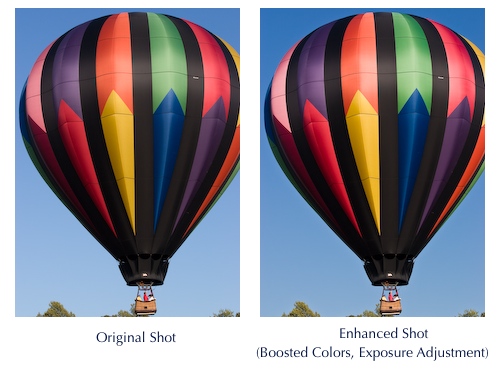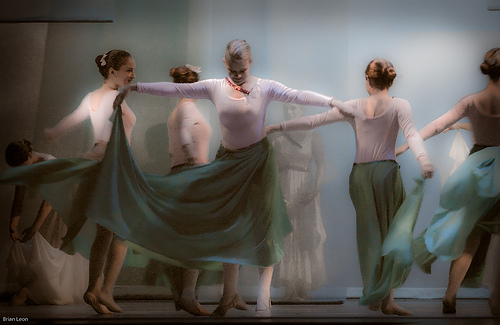Taking the shot vs making the image
In the world of photography, there are many debates and opposing camps as there are models of cameras. They range in passion and breadth from the extremely minor to the fundamentals of photography. There are people who pride themselves on using only prime lenses versus zooms. There are those who are Canon fans as opposed to the Nikon fans. There are people who swear by using ballheads on their tripods while others will use only pan head and so it goes.
One of the most fundamental points of contention in photography is how should the photograph you take should be represented. For lack of a better term, I would categorized the argument as taking the shot as opposed to making the image.
At its simplest, taking the shot is represented by a photograph that is unaltered in every way from the moment that the photograph is taken. No cropping, no change in exposure levels, no changes in color. What you shot is what you get. The best kind of example of this sort of photograph is the journalist shot at a moment and then transmitted quickly to a newspaper or photo archive like Getty Images. In this sort of photography, time is of the essence so there is no time to start Photoshop and tweak the image. Experienced photographers learn to crop in camera through careful composition and getting their exposure right.
Before the advent of digital cameras, amateur photographers were pretty much stuck with whatever result they had when they took a photo. No do overs unless you were willing to take several shots at different settings in hope that at least one of them was a keeper. Hence the need for several rolls of film which when you factor in the price of processing started to become pretty expensive.
So even with the availability of software that can make a decent or bad photo much better and appealing, many photographers still adhere to the philosophy that the shot they took is the shot that they have to present.
To me that is the extreme approach.
Other photographers take a more restrained approach. They will use software to make some basic adjustments like resetting their exposure levels or crop out an intrusive object like a tree branch jutting into a sky shot. To them, that is enhancing the shot and not much different in the time of film when you could adjust the exposure level of a photograph as you develop the photograph and use rulers to block unwanted elements from the finished print.
For much of my photography, that is what I do for most of my photos. Simple changes that allows me to take a RAW image and have it posted to the web in a matter of minutes. The volume of photos I take at an event does not allow me the luxury to linger over all of my photos to get them just right.
A step above the simple adjustments approach is where you try to push the photograph into revealing more than it should. An example of this is whereby through a tool like Photoshop you select a part of an image like a sky that is totally washed out for details and then adjust the exposure levels locally to that selection to bring out the details. Similarly, you can use tools like the color tool where you can emphasis or de-emphasis certain colours in a image to create points of interest. For example, in the below shot, there are two shots of a hot air balloon. The left image is a straight shot with no edits to it other than cropping part of the image. The right image, though, has been enhanced. Hot air balloons are noteworthy for their bright colours and I wanted to emphasis those colours in the shot so I boosted the saturation and luminance levels of certain colours. Also adjusted the exposure level as well. But the change is not a major one; it is actually quite subtle. So there is a deviation from reality in that the produced image is not what everyone will recall to have seen but the image is improved a bit to be more pleasing to view and that is more important to me than adhering to some concept of not tampering with the original image.
Finally, there are the images that receive radical transformations through software processing. Replacement of colours, soft focusing, isolation of detail are the sort of things that if you remark on them negatively, you are then classified as a purist. But many of these techniques were available through the use of filters and lighting before the arrival of the digital age. Now, those techniques are available to everyone who have the software to do them, not just the professional photographers.
I have been able to create some interesting effects with software. On the series of photographs I took at the dance recital, I experimented with them to make them more artistic or perhaps to bring out some detail that stood out for me. Some are very dreamlike in their effect, more like paintings in a way.
So the question now whether these are still photographs?
It is hard to say. The original source was a photograph but has the photo been so transformed that it lacks a basis in reality. In a way the photograph just becomes the raw material for the finished product much like the clay that becomes a bowl. But it becomes a matter of degree, though. Can you still see the photograph contained within the finished product? If so, then it is still a photograph. Has other materials like paper been added to the photograph? If so, then it a collage. Does the photograph contain separate images? Then it is a composite but still a photograph. Has materials like text, shapes or borders been added to the photograph? Then it is a graphic.
In general, though, my philosophy has been that the photograph I take is just a starting point to the final image. Every photograph could always be improved in some aspect whether exposure adjustments, cropping or highlighting some colours. But to me it is still a photograph even when I take it to some extreme like I did for the dance recital shots. But whatever line there is that separates a photograph from an image or something is pretty much in the eye of the beholder.


